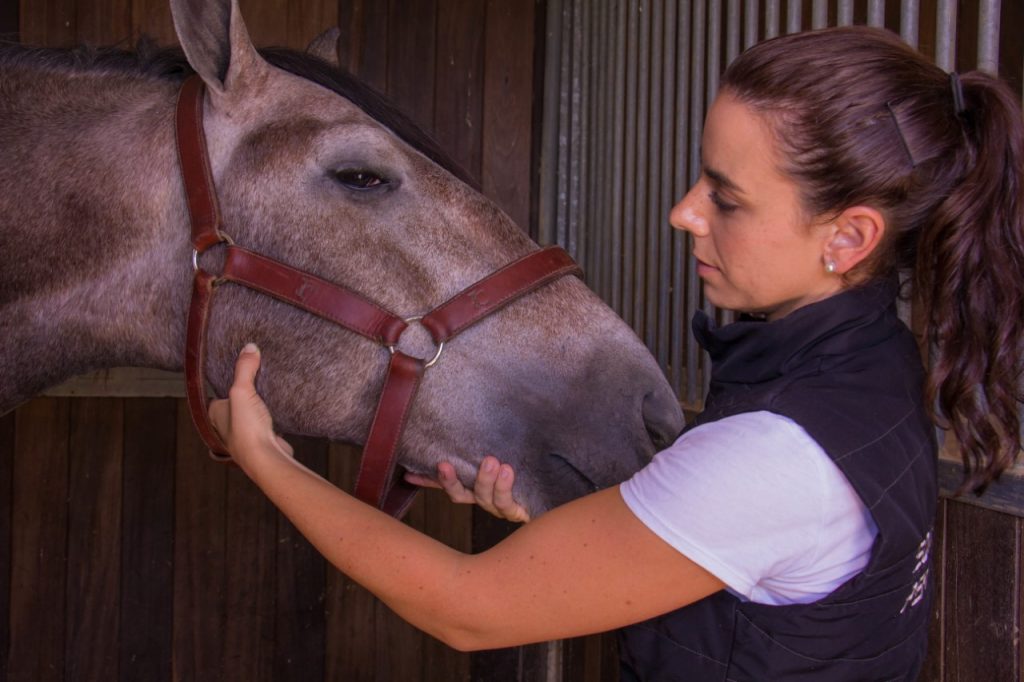The Central Nervous System (CNS) controls the correct function of all the horse’s systems, but to provide greater control regarding the musculoskeletal system there are different types of subsystems.

- Active subsystem or Muscular System: Its main fourpose is to generate movement in all different planes of space, although it is also responsible for generating proprioceptive information.
- Passive subsystem or osseto-ligamentous system: It allows passive stability. For example, when a deformation occurs in the direction of elongation, a response through a complex proprioceptive feedback system takes place fixing the joint of the elongated segment.
- Fascial Subsystem: We must understand this sysyem as an uninterrupted three-dimensional network that allows the interconnection of the entire body. Its main functions are protection and coating, redistribution of loads and tensions, support of the postural balance and production of nutrients and collagen.
The correct harmony between the previously described subsystems provides a balanced body. To maintain this balance, any imbalance must be compensated by an imbalance in the opposite direction. This is the reason why it does exist two systems that control the statics and consequently the overall muscular balance of the horse:
- Static balance: its goal is to keep the horse’s center of gravity within the base of support. It is an active system since it depends on the myotatic reflex.
**The myotatic reflex is a monosynaptic reflex that consists on a reflex contraction of a muscle in reaction to its own stretch. It is triggered by the stimulation of the sensory fibers of the neuromuscular spindle. Its objective is to keep a constant length of the muscle by preventing movement.
- Static adaptation: its objective is to re-harmonize the static balance when it fails. It is an active system since it depends on the gamma system.
**The contractile element of the neuromuscular spindle is innervated by gamma motor neurons; this innervation depends on the reticular formation and the cerebellum. When the contraction of the neuromuscular spindle occurs, the sensitive receptor tenses and the myotatic reflex occurs, preventing muscle elongation. To avoid this action and allow muscle contraction, elongation of the contractile part of the spindle should not occur. This is allowed by the action of the gamma system through the relaxation of the neuromuscular spindle (inhibition of the tension of the sensory receptor).
It is important to bear in mind that a muscle that is in an external route uses elastic suspension to cope with the action of gravity and produces little energy expenditure. On the other hand, when a muscle is in an internal route, it uses muscle contraction and produces a lot of energy expenditure, so in this case the muscle or muscle segment is in constant static adaptation. Prolonged muscle contraction produces hypertonia that can turn into contractures, changes in muscle support points, increases compression forces against other structures and consequently can evolve into degenerative muscle pathologies.
Equine Physio Performance adapts the different working methods to treat muscular dysfunctions and alterations in each case, always based on the following principles:
1. The muscular reinforcement does not modify the statics.
2. Muscle reinforcement improves dynamics, once static has been corrected.
Conclusion is drawn as treatment of pathologies related to muscular alterations should never begin by enhancing the muscles, but by making it more flexible and performing muscle motor control exercises.
It is essential that there is a good relationship between stability and mobility in order to provide a good harmony between the different gaits and thus also be able to obtain the maximum sporting potential. Otherwise, there is an inefficiency in propulsion, greater useless muscular energy expenditure and the existence of joint instabilities.
**This last term refers to the fact that when a joint is stable it slides within the physiological range of motion, so it will be unstable when it slides beyond the physiological range and will be susceptible to injury. Specifically, a joint is unstable when it loses, under physiological loads, the ability to maintain intra-articular displacement patterns within the neutral zone (part of the intra-articular path where there is minimal resistance to movement).

